This article was medically reviewed by Lacy Windham, MD. Lacy Windham, MD, is a Board-Certified Obstetrician & Gynecologist in Cleveland, Tennessee. Dr. Windham attended medical school at the University of Tennessee Health Science Center in Memphis. Her residency was completed at Eastern Virginia Medical School in Norfolk, Virginia. She was the recipient of multiple awards during her residency training, including Most Outstanding Resident in Maternal Fetal Medicine, Most Outstanding Resident in Oncology, Most Outstanding Resident Overall, and Special Award in Minimally Invasive Surgery.
There are 16 references cited in this article, which can be found at the bottom of the page.
This article has been viewed 557,081 times.
Breast cancer occurs when your breast cells develop uncontrollably and a malignant tumor forms.[1] This particular type of cancer impacts many women although occasionally men too. Self-detection is crucial to stopping breast cancer from spreading. Completing regular Breast Self-Exams (BSE) can help you detect cancer before it spreads.[2] Regular mammography is also key.
Steps
Performing a Breast Self-Exam
-
1Schedule your breast self-exams. Mark on a calendar when you will do your BSEs. Aim to do a BSE once a month, preferably five to seven days after your period has ended. Doing regular BSEs will help you get to know the "normal" feel of your breasts. Hang a BSE reminder in your bathroom or bedroom so you do not forget. Also, consider starting a journal to record your observations.[3]
- Plan to do your BSE in a room with good lighting.
-
2Do a visual examination. Stand with your hands on your hips and look at the mirror. Look to see whether your breasts are their normal size, color, and shape. If you have any of the following symptoms, tell your doctor:[4]
- Noticeable swelling yet you are not menstruating at the moment
- Dimpling, puckering, or bulging skin
- Inverted nipples
- Nipples that have moved
- Redness, rashes, or tenderness.[5]
Advertisement -
3Raise your arms and repeat the previous visual examination. Look for discharge from your nipples. If you have discharge, check its color (yellow, clear) or consistency (bloody, milky). Be aware of nipple discharge that happens when you are not squeezing your nipple. Also tell a doctor if you have clear or bloody discharge or discharge only from one breast.[6]
-
4Touch your breasts. Lie down. Bring the pointer, middle, and ring fingers of your right hand together. Feel your left breast with the pads of your three middle fingers in a small, circular pattern. Your circles should have a circumference of 2 cm. Feel your breast from your collarbone down to your abdomen. Then beginning in your armpit area, move from the side to the middle. Repeat the process with your opposite hand to opposite breast. To ensure you feel the entire area, use a pattern like vertical rows. Next, stand up or sit down and repeat these steps. Cover your breast again. Many women prefer to do this last step in the shower.[7]
- Feel for lumps or any other changes. You should report any detectable lumps to your doctor.
- You should cover your breast with light, medium, and firm pressure in each circle. In other words, do a circle with light pressure and then repeat the same area with medium and firm pressure. You need to apply light pressure to notice tissue nearest to the skin's surface. Medium pressure allows you to feel more deeply and the firmest pressure helps you to reach deep tissue near your ribs.[8]
-
5Be aware of the controversy. Some studies show no increased detection of cancer from self-exams, but instead increased worry and biopsies. Talk with your doctor about BSEs — she may recommend you simply become familiar with your breasts so that if changes occur you will know.[9]
Understanding Risk Factors
-
1Realize the importance of risk factors. Early detection of breast cancer is vital. If you possess any high risk factors, be sure to perform regular BSEs. Seek a mammogram if you feel any lumps or are high risk and over age forty.[10]
-
2Be aware of genetic predispositions. Women are more likely than men to get breast cancer. Additionally, if you have had close relatives (e.g. mother, sister) with breast cancer, your chance of having breast cancer increases. There also are inherited gene mutations that predispose one to have a higher risk of breast cancer. These gene mutations are BRCA1 and BRCA2. Five to ten percent of breast cancer cases result from gene mutations.[11]
-
3Understand the impact of your medical history. There are many traits of your health history that can impact your risk profile for breast cancer. Women who have had breast cancer in one breast are more likely to get it again. People who have undergone radiation to their chest area as a young child also carry a higher risk. Additionally, other medical facts, like your first period occurring at age 11 or younger, can increase risk. Starting menopause later than average is also a red flag. Taking hormonal therapy after starting menopause increases risk as does never having been pregnant.[14]
-
4Realize how lifestyle impacts risk. Obese people have a higher chance of getting breast cancer. Women who consume three alcoholic beverages per week also are fifteen percent more likely to get breast cancer.[15] Smokers and particularly women who started smoking prior to the birth of their first child also have an increased risk for breast cancer.[16]
Preventing Breast Cancer
-
1Visit your gynecologist regularly. During your annual gynecological exam, your doctor will check your breasts for lumps or abnormalities. If she detects something irregular, she might recommend that you have a mammogram.[17]
- If you do not have health insurance or funds to visit a doctor, there are likely resources in your area to help you get preventative care. Planned Parenthood offers consultation services and can direct you to a mammography provider.[18]
- If you do not know where to look for help, contact your local Department of Health or call the national cancer line at 1-800-4-CANCER. They can refer you to appropriate help for your situation. You could be eligible for cost-free or inexpensive mammograms.
- See the official US government listing of low-income clinics: http://www.findahealthcenter.hrsa.gov/Search_HCC.aspx.
-
2Get regular mammograms. Once she turns 50, a woman should get a mammogram every two years until she is 74.[19] The earlier you detect breast cancer, the easier it will be to survive. You may have heard that a mammogram is painful, but the pain is momentary and no worse than getting a shot. Plus, it can save your life.
- If you are at high risk, talk to your doctor about how often you should get a mammogram. If you have a high risk and are under 40 years of age, it is possible your doctor will recommend a mammogram already.
-
3Be vigilant and prompt in seeking help. Paying attention and knowing your breasts well is the best thing you can do to detect symptoms of breast cancer. If you have any concerns about what you find in your BSEs, see a doctor immediately.
-
4Make prevention a group effort. Keep your friends and family healthy by arranging a party every year that culminates in everyone getting a mammogram together. This way you can remove the fear from the experience and help each other remember.
- Consider saying: "I know a lot of people don't get the mammograms because they're scary and they can hurt a bit, but I'd love to find a way that we can make it fun!"
Expert Q&A
-
QuestionWhat are some preventative measures I can take to reduce my risk of breast cancer?
 Joshua Ellenhorn, MDJoshua Ellenhorn, MD, is a board certified surgeon with advanced training in the fields of surgical oncology, minimally invasive surgery, and robotic surgery. He runs a private practice at Cedars-Sinai Medical Center in Los Angeles, California and is a nationally recognized leader in surgery, cancer research, and surgical education. Dr. Ellenhorn has trained more than 60 surgical oncologists and has spent over 18 years in practice at the City of Hope National Medical Center, where he was a professor and the chief of the Division of General and Oncologic Surgery. Dr. Ellenhorn performs the following surgical procedures: gallbladder surgery, hernia repair, colorectal cancer, skin cancer and melanoma, gastric cancer, and pancreatic cancer. He earned an MD from the Boston University School of Medicine, completed fellowships at the University of Chicago and Memorial Sloan-Kettering Cancer Center and finished his residency in surgery at the University of Cincinnati.
Joshua Ellenhorn, MDJoshua Ellenhorn, MD, is a board certified surgeon with advanced training in the fields of surgical oncology, minimally invasive surgery, and robotic surgery. He runs a private practice at Cedars-Sinai Medical Center in Los Angeles, California and is a nationally recognized leader in surgery, cancer research, and surgical education. Dr. Ellenhorn has trained more than 60 surgical oncologists and has spent over 18 years in practice at the City of Hope National Medical Center, where he was a professor and the chief of the Division of General and Oncologic Surgery. Dr. Ellenhorn performs the following surgical procedures: gallbladder surgery, hernia repair, colorectal cancer, skin cancer and melanoma, gastric cancer, and pancreatic cancer. He earned an MD from the Boston University School of Medicine, completed fellowships at the University of Chicago and Memorial Sloan-Kettering Cancer Center and finished his residency in surgery at the University of Cincinnati.
Board Certified General Surgeon & Surgical Oncologist Breast cancer can be diagnosed early with the use of mammograms and ultrasounds when appropriate. Those who are at an increased risk of breast cancer need to follow their doctor's recommendations about getting those as recommended. In the general population, ages 40 and on, yearly mammograms and follow up appointments when there are abnormalities are important. In terms of predisposing features, eating healthy, being healthy, and being of an appropriate weight can reduce the chance of developing breast cancer.
Breast cancer can be diagnosed early with the use of mammograms and ultrasounds when appropriate. Those who are at an increased risk of breast cancer need to follow their doctor's recommendations about getting those as recommended. In the general population, ages 40 and on, yearly mammograms and follow up appointments when there are abnormalities are important. In terms of predisposing features, eating healthy, being healthy, and being of an appropriate weight can reduce the chance of developing breast cancer.
Warnings
- Sometimes, starting treatment just a weeks earlier can make the difference between surviving and not surviving cancer. Do not delay getting tested.⧼thumbs_response⧽
References
- ↑ https://www.breastcancer.org/facts-statistics
- ↑ https://www.breastcancer.org/symptoms/testing/types/self_exam
- ↑ https://www.breastcancer.org/symptoms/testing/types/self_exam
- ↑ https://www.breastcancer.org/symptoms/testing/types/self_exam
- ↑ https://www.breastcancer.org/screening-testing/breast-self-exam-bse
- ↑ https://my.clevelandclinic.org/health/diagnostics/3990-breast-self-exam
- ↑ https://my.clevelandclinic.org/health/diagnostics/3990-breast-self-exam
- ↑ https://www.uofmhealth.org/health-library/hw3791
- ↑ https://healthblog.uofmhealth.org/cancer-care/should-you-do-self-breast-exams
- ↑ https://www.cdc.gov/cancer/breast/basic_info/risk_factors.htm
- ↑ https://www.breastcancer.org/risk/factors/genetics
- ↑ https://www.breastcancer.org/risk/factors/race_ethnicity
- ↑ http://www.cancer.gov/cancertopics/factsheet/Risk/BRCA
- ↑ https://www.breastcancer.org/risk/factors/family_history
- ↑ https://www.breastcancer.org/risk/factors/alcohol
- ↑ https://www.cancer.org/cancer/breast-cancer/risk-and-prevention/lifestyle-related-breast-cancer-risk-factors.html
- ↑ https://www.cancer.org/cancer/breast-cancer/risk-and-prevention/can-i-lower-my-risk.html
- ↑ http://www.plannedparenthood.org/learn/womens-health/breast-cancer-screenings/
- ↑ http://womenshealth.gov/publications/our-publications/fact-sheet/mammograms.html
About This Article
Breast cancer occurs when your breast cells develop uncontrollably and a malignant tumor forms. Aim to check your breasts for any symptoms once a month about a week after your period. Check your breasts for any lumps, redness, rashes, or tenderness. Other symptoms include swelling when you’re not menstruating, inverted or moving nipples, and discharge when you’re not squeezing your nipples. If you notice any unusual changes to your breasts, visit your doctor for a medical examination to be safe. For more tips from our Medical co-author, including how to help prevent breast cancer, read on.



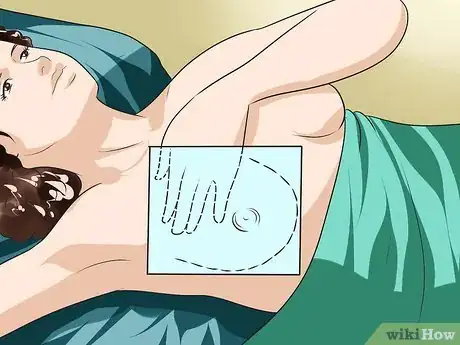
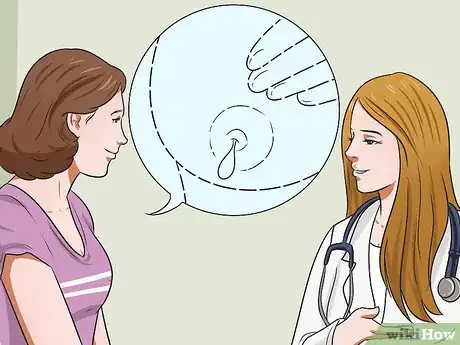

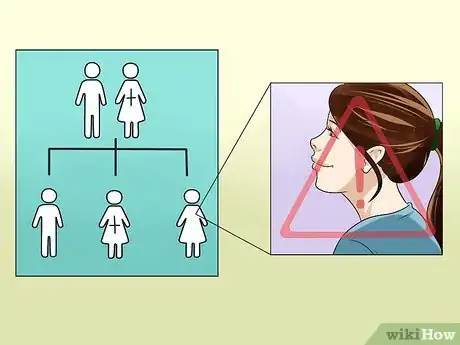
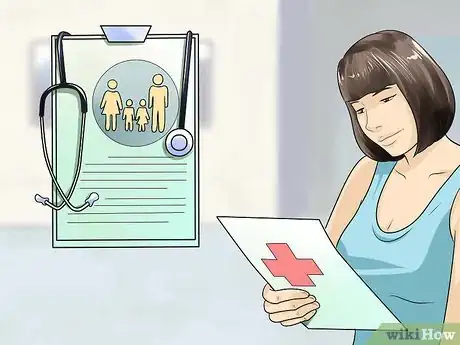
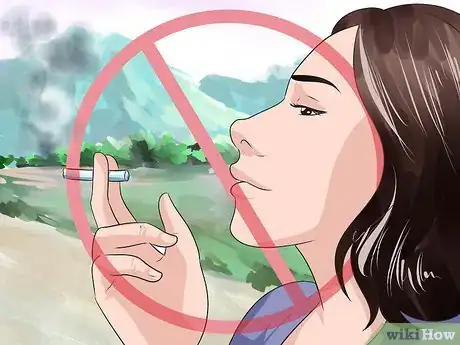













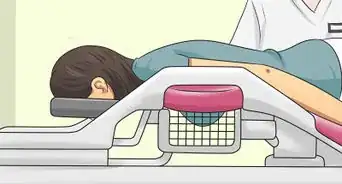











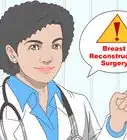



































Medical Disclaimer
The content of this article is not intended to be a substitute for professional medical advice, examination, diagnosis, or treatment. You should always contact your doctor or other qualified healthcare professional before starting, changing, or stopping any kind of health treatment.
Read More...